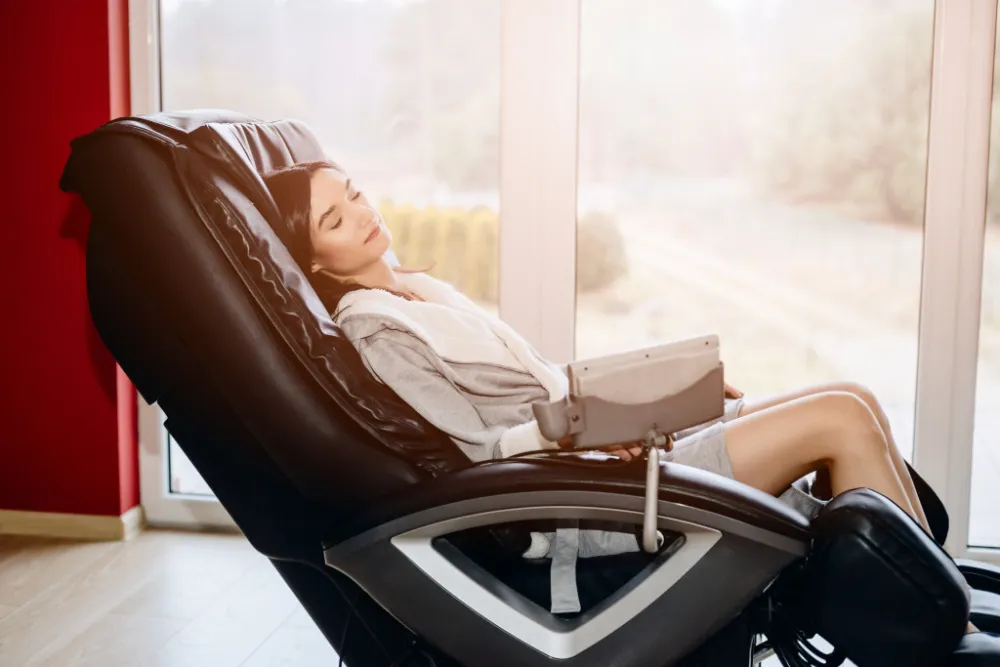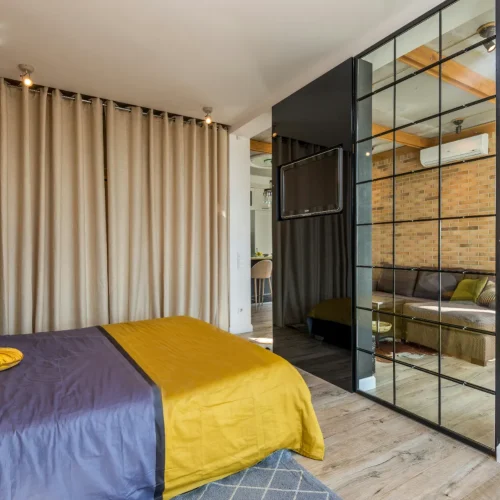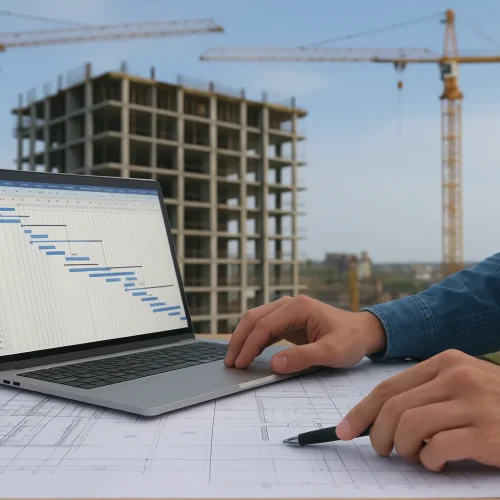
Long hours at a desk often leave the body feeling tense and drained. A standard ergonomic chair can reduce some pressure, but it rarely offers active relief. That is why combining support with massage is gaining attention—transforming seating into a daily tool for restoration as well as productivity.
Understanding the Concept of a Massage Office Chair
The modern workplace demands extended periods of sitting. Even when posture is ideal, the muscles around the spine, shoulders, and hips grow tight from inactivity. Traditional ergonomic solutions aim to position the body correctly, but they do not undo the damage caused by stillness.
A massage office chair bridges this gap. Built with integrated massage mechanisms—ranging from simple vibration to advanced rolling systems—it targets areas most affected by desk work. By offering relief while you sit, it changes the very nature of office seating. An office chair with massage is not a detachable accessory but a unified design, ensuring comfort is a core function rather than an afterthought.
This approach appeals to professionals across different industries. For remote workers, it creates a healthier home setup. For corporate environments, it provides daily wellness support without demanding extra space. The appeal of an office massage chair lies in how seamlessly it merges health care with work routines.
Key Benefits of Using a Massage Office Chair
When used thoughtfully, a massage chair provides more than temporary comfort. It brings measurable improvements to physical and mental well-being.
Muscle Relief and Relaxation
Muscle stiffness is one of the most common complaints of desk workers. Tension builds in the lower back, shoulders, and neck, often leading to discomfort that persists even after leaving work. Massage features in an office chair with massage address these hotspots directly, loosening muscles before pain becomes chronic.
Circulation and Energy Levels
Sitting compresses blood flow, especially in the legs. Vibration and kneading promote circulation, reducing the heavy, sluggish feeling common at the end of the day. Improved blood flow translates into steadier energy and less afternoon fatigue.
Stress and Mental Clarity
Stress is not only psychological—it manifests physically in the body. By easing muscular tension, a massage office chair supports clearer thinking. Less pain and stiffness create more space for focus, allowing tasks to feel less draining.
Quick summary of key advantages:
- Loosens tight muscles in the back, neck, and shoulders.
- Encourages circulation to combat fatigue.
- Helps prevent tension headaches caused by poor posture.
- Reduces stress to sharpen concentration.
- Supports overall well-being during long workdays.
Types of Massage Office Chairs
The market offers a range of designs, each suited to different needs and budgets.
Vibration-Based Designs
These chairs use small motors placed in the seat or backrest. The steady hum stimulates muscles lightly, making them a popular choice for budget-conscious buyers. They are simple yet effective for general daily relief.
Heated Variants
Heat enhances the benefits of vibration by encouraging deeper muscle relaxation. Particularly useful in cold environments, heated chairs help loosen stiffness faster and provide comfort on long winter days.
Shiatsu-Style Chairs
Inspired by traditional massage, these models employ rollers that mimic kneading motions. An office massage chair of this kind provides deeper relief for chronic pain or persistent tightness, though it usually comes at a higher price.
Hybrid Ergonomic Models
A hybrid office chair with massager blends into a professional setting. From the outside, it looks like a sleek ergonomic chair; hidden inside are massage functions. This option appeals to those who want wellness support without drawing attention.
Features to Prioritize When Choosing
Selecting the right model requires more than comparing price tags. Key features determine whether a chair will truly enhance your day-to-day experience.
- Seat comfort: Padding quality matters. A chair should remain supportive even when the massage is switched off.
- Noise levels: Quiet operation ensures you can use massage functions during calls or meetings without distraction.
- Adjustability: Height, tilt, and armrests must accommodate body proportions to avoid misalignment.
- Controls: Remotes or integrated panels should be intuitive, making it easy to adjust settings.
- Durability: Strong construction extends lifespan and prevents mechanical failures.
It is within this context that a massage office chair proves its value: not as a luxury purchase but as a practical solution to daily strain.
Checklist before buying:
- Test the padding for lasting comfort.
- Check how loud the massage function is.
- Look for adjustable components to match your height.
- Review control systems for usability.
- Confirm warranty coverage for moving parts.
Matching a Chair to Your Needs
A single design does not suit everyone. Choosing depends on your workspace, habits, and health priorities.
Home Office Setup
At home, space often allows for larger models. Shiatsu or heated versions double as relaxation chairs outside of work hours, providing versatile value.
Traditional Workplaces
In shared spaces, discretion matters. A hybrid office chair with massage provides subtle comfort while maintaining a professional appearance.
Flexible and Budget-Conscious Options
Compact models offer essential relief without excess size or cost. For many users, a streamlined office chair with massager strikes the right balance between function and practicality.
When deciding, consider:
- How much space do you have?
- Will the chair be used in a private or shared environment?
- Do you need light daily relief or deeper massage functions?
- What level of investment feels sustainable?
Everyday Use and Practical Advice
Proper use ensures long-term benefits rather than quick fixes.
Short, Regular Sessions
Massage is most effective in short bursts—five to fifteen minutes at a time. Overuse can desensitize muscles or reduce the sense of relief.
Balanced Habits
Even with advanced features, chairs cannot replace movement. Stretching, standing breaks, and short walks remain crucial for circulation and posture.
Maintenance Practices
Caring for upholstery, checking electrical connections, and moderating heat use prolongs the life of an office massage chair.
Practical do’s and don’ts:
- Do use massage in intervals throughout the day.
- Do combine massage with light stretching.
- Don’t rely on massage as your only form of relief.
- Don’t ignore signs of wear—maintain regularly.
Why This Approach Matters
Combining ergonomic support with active relief fills a gap that standard chairs leave open. Pain and fatigue affect more than comfort—they reduce productivity and limit long-term health.
A well-chosen office chair with a massage feature helps maintain energy and focus while reducing the risk of sedentary strain. It integrates care into the standard workflow, making sustainable well-being easier. By offering both support and restoration, the design redefines what an office chair can provide.
Conclusion
An office massage chair is not a gimmick but a thoughtful response to the realities of modern work. By merging posture support with massage, it transforms hours of sitting into an opportunity for restoration. Whether simple vibration, added heat, or shiatsu-style rollers, the functions address problems before they escalate.
The value lies in balance: maintaining the body’s alignment while also providing active relief. Over time, this combination reduces fatigue, improves clarity, and supports healthier working habits. A carefully selected office chair with a massager becomes more than a place to sit—it becomes part of the daily rhythm of well-being, helping people finish the day not depleted but steady and refreshed.













